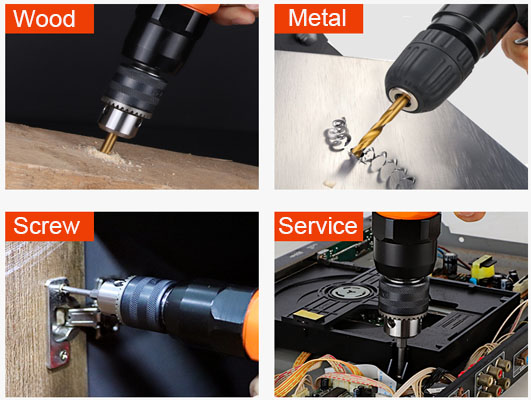Pneumatic Drill: Structure and Applications
Pneumatic drill, also known as air drill, is a tool that uses compressed air to generate power. It converts the energy stored in compressed air into rotational motion, enabling it to perform various tasks such as drilling and threading. This tool typically consists of a handle, a motor mechanism, and a chuck used to secure drill bits or other attachments. Compressed air is supplied to the drilling rig through an air hose connected to the air compressor. Pneumatic drilling rigs are renowned for their power, speed, and durability, making them popular in industries such as construction, manufacturing, automotive, and woodworking. In this article, ATO industrial automation will take you through the structure and application of pneumatic drill.
Pneumatic Drill Structure
Cylinder: The cylinder of a pneumatic drill bit plays a crucial role in its operation. A cylinder usually consists of a cylinder barrel, piston, piston rod, and sealing device. In pneumatic drill rigs, the cylinder mainly drives the movement of the piston through compressed air or other gases, thereby achieving the operation of the drill bit. Specifically, when the air source (usually compressed air) is introduced into the cylinder, the gas pressure inside the cylinder increases, pushing the piston to move along the axis of the cylinder barrel. The thrust generated by this movement is transmitted to the drill bit, allowing it to rotate and perform tasks such as drilling.
Air valve: An air valve is a device that controls the flow of gas. The air valve can control the inlet and outlet of the air source (usually compressed air), thereby achieving the start and stop of the pneumatic drill bit. When the gas valve opens, gas flows from the gas source into the cylinder to drive the piston to move; When the air valve is closed, the air supply stops, the piston stops moving, and the drill bit stops working.
Rotating part: The rotating part is an important component in pneumatic drill, usually including the drive shaft, gear transmission system, and support and positioning components. It controls the fixture of the pneumatic drilling rig through the rotation of the rotor. When the air drill is working, the rotating part will convert the mechanical energy generated by the vibration in the cylinder into rotating energy and transfer it to the fixture.
Speed regulation mechanism: The speed regulation mechanism can achieve speed regulation control of pneumatic drilling machines by changing the air pressure inside the cylinder. When the air pressure is high, the drilling rig rotates faster; When the air pressure is low, the speed of the drilling rig is slower. By adjusting the air pressure, quick switching and speed control of pneumatic drilling rigs can be achieved. The speed regulation function of pneumatic drilling rigs is very important for drilling operations with different workpiece materials, drill bits of different diameter sizes, and different work requirements. It can improve drilling efficiency, extend tool life, and ensure work quality.

Pneumatic Drill Applications
Automotive manufacturing: With its high torsion and high rotational speed characteristics, air drills are widely used in the automotive manufacturing industry to repair various materials of sheet metal, such as sheet metal and aluminum plates. In addition, during the process of automotive repair and maintenance, pneumatic drilling rig can help technicians quickly disassemble or install fasteners, improving maintenance efficiency.
Construction industry: Air drills can be used to drill and cut hard materials such as concrete and stone on construction sites. It is usually used in conjunction with special drill bits or cutting tools, and can quickly and accurately complete required processing tasks, such as installing steel bars, pipelines, etc. At the same time, pneumatic drill can also be used for various construction fixing and fastening, such as installing steel structures, building scaffolding, etc.
Woodworking engineering: In civil engineering, it is often necessary to drill underground rocks and soil to obtain geological information, conduct surveys, or carry out basic engineering design. Drill motor can be used to quickly and accurately drill rocks and soil, providing a basis for engineering design. This external air drill can be used to demolish concrete structures, clean steel bars, etc, making demolition and cleaning work more efficient.
Furniture installation: During the furniture installation process, it is often necessary to tighten screws to secure various components of the furniture, such as furniture casters and foot mats that need to be fixed to the bottom of the furniture through screws to provide support and protect the floor. Air drills can be used to quickly install casters and foot pads, ensuring their stability and functionality. Air drills are also used in home repair processes, such as dismantling furniture, replacing door and window accessories, repairing walls, etc. The efficiency and versatility of air drills can meet various home maintenance needs. For those who enjoy DIY, pneumatic drilling are one of the indispensable tools. It can be used to make small household items, decorations, etc, to meet the needs of personalized decoration.


